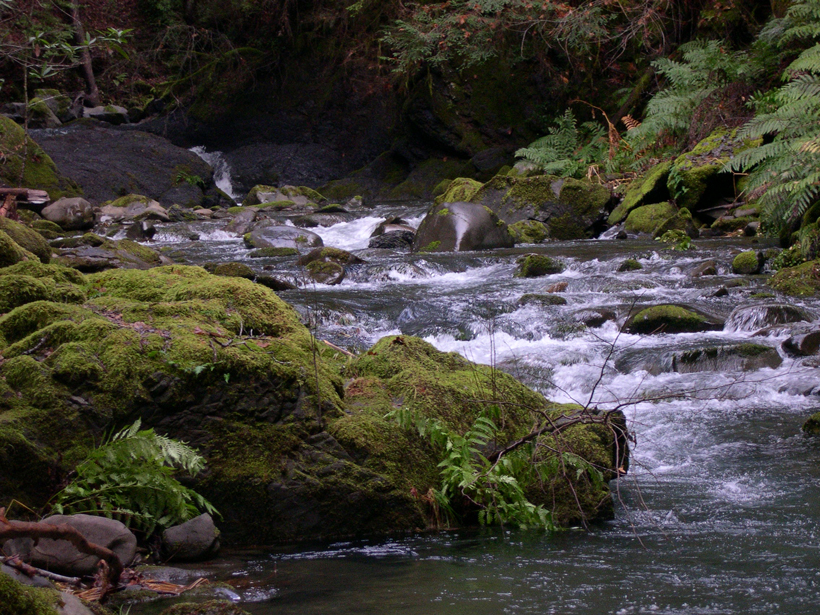Source: Water Resources Research
Water flowing over a mountainous landscape can be serene or tumultuous, depending on a variety of physical factors: how much sediment it is carrying, the angle of incline, the ruggedness of the terrain, and more. Understanding the mechanics—or, rather, hydraulics—of this flow is essential to preparing for floods, classifying and restoring natural habitats, and undertaking geologic and engineering projects.
Over the past century, the hydraulics of gently sloping riverbeds have been more thoroughly studied than those with sharp inclines, despite the fact that steep, rocky channels are a key part of mountain drainage systems. Although observational studies have revealed some general differences between the two, experimental tests to better explain these differences have proved difficult.
For the most part, this difficulty is because the ideal test conditions so rarely occur in nature. The prime location to conduct further research would be a steep stream devoid of particle clusters (gravel and cobbles that clump together at the bottom of a river), large boulders, and bed forms (geologic features formed by water interacting with a riverbed), all of which complicate scientific analysis of a stream’s flow.
Similar studies conducted on bed form–free, gently sloping rivers over the past few decades have allowed scientists to clearly assess the role of bed forms in the momentum conservation, flow resistance, sediment transport, and velocity profile (a function of the water’s average speed at varying heights above the surface of the riverbed) for these types of streams.
Sadly, few natural streams exist that are both steep and free of bed forms.
To get around this obstacle, Lamb et al. designed a simulated environment that would allow them to explore the hydraulics of water flow over a rough, planar (flat-layered) riverbed. Their design allowed them to study a wide range of conditions that could occur in steep mountain streams.
Their test environment, called a flume, is encased in glass and measures about 15 meters by 1 meter. The researchers can adjust the water level as well as the slope of the “riverbed” by tilting it back and forth. A motorized cart travels along railroad-type tracks, transporting various instruments used to measure the velocity of the flow.
Stones glued to the floor simulate natural formations typically found in a rough-bedded mountain stream (a laser precisely analyzes its topography), but simulated bed forms are, notably, absent. The video below shows an example of the flume in action, discharging 510 liters per second over a riverbed at an 8° slope.

In all, the researchers conducted 58 experiments, including inclines much steeper than those that have been studied in the past. By comparing the results of these experiments to a flow velocity model they developed, they found the velocities of steeply and gradually sloping streams to be surprisingly similar, given how different these types of streams appear to be at the surface (steep streams are generally splashier and bubblier).
The team was also somewhat surprised to find that two factors in the steep, simulated riverbeds (no bed forms) closely matched observations from natural mountain streams (with bed forms). For one, flow resistance tended to increase as the roughness of the riverbed increased. Using their model, they inferred that steeper slopes should carry smaller loads of sediment. Given these results, the researchers wonder whether bed forms might not be causing the observed variations after all or, at least, not to the extent that was previously believed. (Water Resources Research, https://doi.org/10.1002/2016WR019579, 2017)
—Sarah Witman, Freelance Writer
Citation:
Witman, S. (2017), Lab tests probe the secrets of steep and Rocky Mountain streams, Eos, 98, https://doi.org/10.1029/2017EO071995. Published on 21 April 2017.
Text © 2017. The authors. CC BY-NC-ND 3.0
Except where otherwise noted, images are subject to copyright. Any reuse without express permission from the copyright owner is prohibited.

